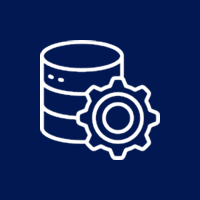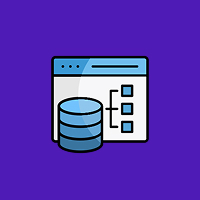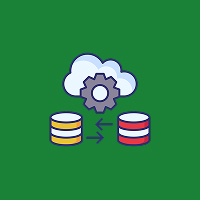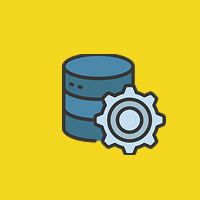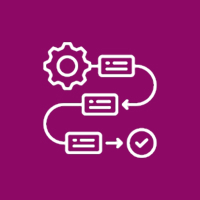Node.js is a scalable and high-performance framework suitable for developing high-performance applications. Nevertheless, as your application gets bigger and receives more users, it is critical that its performance is always at its best. Slow applications, server crashes, or unnecessary costs resulting from poor resource usage may be brought about by poorly optimized Node.js applications.
Here in this article, we will discuss some of the most significant tips and strategies that you can use to improve the performance of your Node.js applications
1. Handle Asynchronous Code Effectively
Node.js uses an event-driven, non-blocking I/O model and therefore is quick and scalable. However, such non-blocking at times has been found to introduce complexities while programming asynchronous code. Asynchronous code, unless properly controlled, can lead to performance bottlenecks and memory leaks.
To make your application perform optimally, you need to prioritize handling asynchronous code effectively. Employ async/await to make asynchronous calls easier and eliminate callback hell. This will make your code more readable and less complicated to handle asynchronous operations.
Also, ensure you are not overloading the event loop. You should delegate long-running operations to worker threads or other processes so that the event loop is not blocked. This will make your application responsive and help with resource management improvement.
2. Enhance Event Loop Performance
Event loop is the hub of Node.js since it handles asynchronous events and I/O operations. The event loop can lead to performance degradation such as slow response or high latency if blocked.
In order to achieve the highest possible event loop performance, try to avoid CPU-intensive functions from being run on the event loop itself. The long-running operations can be left to other processes or workers. This would ensure the event loop remained unblocked and processed the requests in a most efficient manner.
Also, avoid calls to process.nextTick() and setImmediate() as both queue functions for later execution after the current task and can block other crucial task executions in the event loop.
3. Avoid Memory Usage
Optimization of memory usage is a critical consideration while optimizing Node.js applications. While your application takes on more and more requests, it is imperative to keep tabs on memory use to prevent memory leaks and deteriorating performance.
One of the optimal practices for memory optimization is not to store large quantities of data in memory unnecessarily. Instead, use streaming data and process chunks to process large datasets more effectively.
Also, monitor heap memory usage occasionally with the help of tools like Heapdump and v8-profiler. Such tools will identify memory leaks and inefficient memory usage patterns that lead to performance deterioration over time.
4. Optimize Database Queries
Database queries are usually one of the slowest parts of a web application. Unoptimized or inefficient queries have the potential to greatly affect your Node.js app’s performance, particularly as your database increases.
To optimize database performance, ensure that your queries are optimized. Utilize database indexes, avoid complex joins as much as possible, and restrict the number of queries executed to the database. Also, leverage pagination when querying large data to prevent fetching irrelevant data.
In cases where you need to ask frequently accessed data, you might consider implementing caching technologies like Redis. Caching gives you the capability to store frequently accessed data in memory and significantly reduce the frequency of repeated database queries.
5. Use HTTP/2 for Better Performance
HTTP/2 is a major revision of the HTTP protocol, and it has many performance advantages over HTTP/1, including quicker page loads and reduced latency. With HTTP/2 turned on in your Node.js application, you are able to leverage features like multiplexing, header compression, and server push, all of which enhance the overall performance of your application.
Node.js natively supports HTTP/2, and using this protocol can make your app’s interaction with clients more effective, meaning you will have better response times and more satisfactory user experiences.
6. Caching Techniques
One of the most beneficial ways to make your Node.js application more performance-friendly is through caching. Caching frequently accessed data means you reduce the server load and give users better response times.
There are different caching techniques you may use depending on your needs:
- Employing Redis or Memcached for caching in memory is highly effective for caching data that rarely changes.
- Static resources like images, CSS files, and JavaScript files can be cached at edge locations close to users using Content Delivery Networks (CDNs) in order to improve load times and reduce server load.
- HTTP cache headers like Cache-Control and ETag allow browsers to store resources locally so that they don’t have to download the same information repeatedly from the server.
7. Load Balancing for Scalability
When your Node.js application grows and gets more traffic, a single server might not be able to handle the load. Load balancing sends incoming requests to multiple servers, improving your application’s scalability and availability.
Node.js’s single-threaded architecture means that it can process only one request at a time per thread. By using a load balancer (like NGINX or HAProxy), you can distribute incoming traffic among multiple Node.js instances on different CPU cores or even different servers. This can really boost your app’s horizontal scaling capability.
8. Profile and Monitor Application Performance
Performance tuning does not end once you have implemented best practices. There is a need for regular monitoring to ensure your Node.js application continues to be efficient in the long run.
Keep an eye on CPU utilization, memory usage, and response times with monitoring tools like PM2, New Relic, or Datadog. Use Node.js Profiler or tools like Clinic.js to identify performance bottlenecks and diagnose memory usage problems, event loop latency, or slow database queries.
Regular profiling allows you to solve issues before they turn into critical issues, maintaining your application optimized while it scales.
9. Optimize Static Asset Delivery
Delivery of static resources like images, stylesheets, and JavaScript can be a major source of poor performance if not optimized. Ensure these resources are compressed, minified, and delivered in an efficient manner to users.
- Compression: Compress text assets (HTML, CSS, JS) with gzip or Brotli compression before sending them to the browser. This can significantly speed up load times.
- Minification: Minify your HTML, JavaScript, and CSS files to remove unnecessary whitespace and comments, reducing their size and improving performance.
- Use a CDN: A CDN assists in serving assets from geographically dispersed servers, making assets load faster for users, particularly those far from your origin server.
10. Maintain Dependencies Current
Occasionally, performance issues arise due to slow or outdated dependencies. Update your Node.js dependencies as frequently as possible to prevent running slow versions. Additionally, remove all unnecessary dependencies from your application to reduce the size and complexity of your program.
Utilize tools like npm audit to identify vulnerabilities and outdated packages that may be slowing down your app.
Conclusion
Optimizing Node.js performance is a dual-pronged approach that requires focus on code and architecture. With these methods—efficiently managing asynchronous code, optimizing the event loop, reducing memory consumption, optimizing database performance, supporting HTTP/2, and leveraging caching—you can make your Node.js applications fast, scalable, and robust.
Regular monitoring, profiling, and regular updates will also allow you to keep up with performance and make your application stay effective as it scales.
Contact Us Today













 Database Development
Database Development





